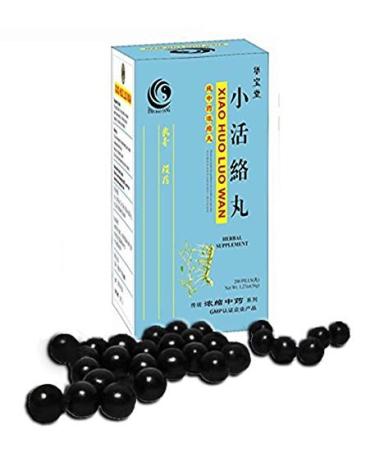Köycegiz Honey Black Cumin HoneyBlack cumin, known as the grain of abundance from Burdur's unique flora, blooms in June and July. In contrast to its black seed, these colorful flowers attract bees with their scent. The migratory beekeepers of the Köycegiz region leave their hives in these regions, beginning the journey of Köycegiz Honey Black Cumin Honey, a source of healing.
We do not pasteurize our products.
Processed honey undergoes a process where it is heated and then cooled, while also being filtered to remove pollen. This process is normally done to prevent honey from crystallizing and to achieve a clear, homogeneous color. However, high temperatures destroy most of the vitamins, minerals, enzymes, and amino acids, causing it to lose its healthy properties.
We preserve the 100 naturalness of Köycegiz Black Cumin Honey by filtering it from the honeycomb, allowing it to age, and then packaging it.
Therefore, it is natural for Köycegiz Black Cumin Honey to crystallize.
Black Cumin nectar, which contains the plant's unique properties, is collected by bees and matured in the hive. Our beekeepers collect it from the hive and deliver it to your table in its most natural form. Köycegiz Black Cumin Honey has many miraculous effects.
It's known to help you maintain and increase your energy and concentration levels throughout the day, and to strengthen your memory. It also supports cell renewal, facilitates digestion, is liver-friendly, and helps prevent toxin formation in your body. It strengthens your immune system, helping you protect against diseases.
Köycegiz Black Cumin Honey, blended with the miraculous properties of black cumin and brought to you, flavor enthusiasts, is just a click away, with the Köycegiz Honey difference!
Our Analysis Certificates
Köycegiz Honey is sampled from honey harvested during the harvest season thanks to the diligence of our bees and the dedication of our beekeepers. All our honey is analyzed regularly at accredited universities (Hacettepe University, Mugla University) under the supervision of leading experts in honey.
All of our purity analyses, based on the Turkish Food Codex Honey Communiqué, are available alongside the products. If we consider these honey parameters individually:
Proline is the dominant amino acid in Köycegiz Honey and Black Cumin. Its amount is a quality criterion for Köycegiz Honey and Black Cumin. A high or low proline value is an indicator of whether the bees are collecting nectar from nature during the Köycegiz Honey Black Cumin Honey production period. According to the Turkish Food Codex Honey Communiqué, the minimum proline value for Köycegiz Honey Black Cumin Honey is 300 mg kg. Accordingly, the amount in our Köycegiz Honey Black Cumin Honey is 1448.44 mg kg.
The diastase value is the most abundant enzyme in our Köycegiz Honey Black Cumin Honey. This enzyme is produced by bees during the ripening of the Köycegiz Honey Black Cumin Honey by secreting it from their stomachs and transferring it to the Köycegiz Honey Black Cumin Honey. The value of this enzyme indicates whether the Köycegiz Honey Black Cumin Honey has been heat-treated. According to the Turkish Food Codex Honey Communiqué, the diastase value must be at least "8". Accordingly, the value in our Köycegiz Honey Black Cumin Honey is "11.12".
The moisture value refers to the amount of water in Köycegiz Honey Black Cumin Honey. It plays an important role in determining the maturity and shelf life of Köycegiz Honey Black Cumin Honey. When Köycegiz Honey Black Cumin Honey is deposited in the honeycomb cells by bees, the moisture content is approximately 0-35 . Bees reduce this moisture content below 10 by balancing the hive temperature and beating their wings. A value above 10 indicates that Köycegiz Honey Black Cumin Honey was harvested early by beekeepers. The maximum moisture value in the Turkish Food Codex Honey Communiqué is 10 . This value is 10 in our Köycegiz Honey Black Cumin Honey.
Electrical conductivity is measured to determine the mineral and acid content of Köycegiz Black Cumin Honey. Electrical conductivity can vary depending on the amount of organic acids, minerals, and proteins in Köycegiz Black Cumin Honey, distinguishing it from either secretory or flower honey. According to the Turkish Food Codex Honey Communiqué, the electrical conductivity of flower honey must be at most 0.8 mS cm. The electrical conductivity value in Köycegiz Black Cumin Honey is 0.95 mS cm.
Free acidity and pH are the primary elements determined by the amount of organic acids, minerals, proteins, and carbohydrates in Köycegiz Black Cumin Honey. This practice plays an important role in the fermentation of Köycegiz Black Cumin Honey and the determination of its secretion. The acids found in Köycegiz Black Cumin Honey not only affect the taste and flavor of the honey but also prevent the growth of microorganisms in Köycegiz Black Cumin Honey. According to the Turkish Food Codex Honey Communiqué, the free acidity value of Köycegiz Black Cumin Honey must not exceed 50 meq kg. The free acidity value of Köycegiz Black Cumin Honey is 44.60 meq kg.
Hydroxymethylfurfural (HMF), the HMF content in Köycegiz Black Cumin Honey. The amount of HMF increases under the influence of parameters such as heat treatment of Köycegiz Black Cumin Honey and prolonged storage under adverse conditions. HMF Köycegiz Honey is formed by the condensation of the carbonyl groups of reducing sugars with the amine groups of amino acids and proteins in Black Cumin Honey. The HMF value is an indicator of the freshness of Black Cumin Honey. According to the Turkish Food Codex Honey Communiqué, the HMF content in Black Cumin Honey must not exceed 40 mg kg. The HMF content in Black Cumin Honey is 11.22.
C4 and Delta C13 values in Black Cumin Honey from Köycegiz Honey C13 analysis in Black Cumin Honey from Köycegiz Honey is the most common method used to identify cane sugar, corn-based sugar, and glucose-based sugar. By examining the different photosynthetic cycles of plants, it provides information about whether Köycegiz Honey is adulterated by using the isotope ratios of the Köycegiz Honey and honey protein. According to the Turkish Food Codex Honey Communiqué, the C4 sugar content in Köycegiz Honey is determined by the processing of the C13 honey and protein fractions. The C4 sugar content in Köycegiz Honey is 2.29 .
Sugar profile analysis in Köycegiz Honey: Because Köycegiz Honey is a carbohydrate-rich food, its dry matter content is approximately 99 , 95 of which consists of fructose and glucose. These two monosaccharides, which give Köycegiz Honey Black Cumin Honey its flavor, are formed by the inversion of sucrose found in the nectar of plants or in the secretions of insects living on the plants, by the invertase enzyme. According to the Turkish Food Codex Honey Communiqué, the sugar profile and ratio for flower honeys are at least 60g per 100g, and the fructose glucose ratio is between 0.9 and 1.4. In Köycegiz Honey Black Cumin Honey, the Fructose Glucose ratio is 60.86 and 1.71.
There should be no sucrose in honey. Bees invert the nectar they collect, breaking it down into fructose and glucose until no sucrose remains. The presence of sucrose in honey is an indication of adulteration. Our Köycegiz Honey Black Cumin Honey contains no sucrose.
Pollen Analysis The honey-bearing plant species that are the source of Köycegiz Honey's Black Cumin Honey are abundant in our country. Turkey boasts a diverse range of approximately 450,000 different plants, varying depending on the region. The Köycegiz region is also an important location for Pine Honey. Furthermore, because our local beekeepers are nomadic, they leave their hives all over Turkey in spring. The bees then enjoy this richness of plants and produce honey. Pollen analyses performed on these extracted honeys provide useful information in determining their geographic and floral origins. Pollen analysis helps identify the nectar-bearing plants in that region, determines the naming of Köycegiz Honey's Black Cumin Honey, and determines the quality and yield of Köycegiz Honey's Black Cumin Honey.
Phenolic and Antioxidant Analysis in Köycegiz Black Cumin Honey: Antioxidants are compounds that prevent cell damage by inhibiting the formation of free radicals in the body. These reactions can be toxic in foods and cause health problems. In short, antioxidant activity can reduce oxidative reactions in the body. Köycegiz Black Cumin Honey is known to be rich in enzymatic and non-enzymatic antioxidants. It is rich in antioxidant compounds such as flavonoids and phenolic acids, as well as tocopherols, alkaloids, and ascorbic acid. The color of Köycegiz Black Cumin Honey generally depends on the carotenoids and flavonoids it contains. Dark-colored honey has a high antioxidant content. In short, honey is rich in antioxidants and can vary depending on the region and season. The phenolic compound content of our Köycegiz Honey Black Cumin Honey is 1066.543 mgGAE kg.













